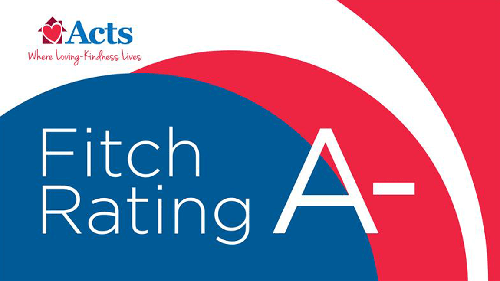How Much Will Healthcare Costs Increase in the Future?

Saving for retirement isn’t just putting money aside for a rainy day. Instead, it’s about making sure you have the savings – and the income – to support a comfortable lifestyle once you leave work for the last time. This requires careful planning of your expenses, including healthcare.
Healthcare is as important as its costs are unpredictable. Even with Medicare, you could still be paying out-of-pocket for anything that’s not routine, and those costs can add up quickly. Not only that, but today’s healthcare costs will be different from tomorrow’s – we all know they will be higher in the future. So what’s a forward-thinking senior to do about the rising cost of healthcare in the United States?
Understanding Current and Projected Healthcare Costs

As of now, there are no indications that a single-payer option is going to become the norm any time soon in the United States. This means that the current norm – Medicare – will continue to only pay for routine healthcare costs. Retirees will still be responsible for paying their out-of-pocket costs for anything and everything that Medicare doesn’t cover, and that’s a lot.
How much does out-of-pocket healthcare cost the average senior? According to some estimates, health care can cost as much as $6,100 per retired person every year, and a healthy couple at the age of 65 can expect to pay upwards of $650,000 lifetime on health care. That’s exclusive of long-term care costs, which could be as much as $100,00 a year according to those same studies!
This should make it obvious that, outside of housing costs, healthcare costs are the biggest hurdle retirees face today. Unfortunately, these costs are only likely to increase as time goes on. Future healthcare costs are likely to far outstrip the inflation rate, and that means the price you pay today for healthcare is going to pale in comparison to what you’ll be paying a decade from now.
How to Control These Increasing Healthcare Costs

Knowing that your healthcare costs are likely to increase exponentially unless you take action might fill you with fear, but worry not – there are, in fact, ways to control these runaway healthcare costs. Some methods work better than others; ensuring you stay in good health by eating a nutritious diet, engaging in regular exercise, and taking any medications your doctor prescribes to you will go far, for example.
Staying fit and healthy isn’t a perfect solution, of course. Even the fittest and most attentive senior can end up with health problems over time, as many illnesses don’t care how many miles you walk a day or how many kale salads you eat. These sorts of issues hold the potential to increase your healthcare costs by a wide margin – and this is why it’s important to find alternative ways to control future healthcare costs. One of the most effective methods is by moving to a continuing care retirement community (CCRC).
Why a CCRC Could Be the Answer

A CCRC isn’t your run-of-the-mill retirement community, not by a long shot. Sure, you get all the amenities you would expect from a top-notch retirement community such as fitness centers, swimming pools, card and game rooms, art and woodworking studios, and dozens of other activity centers, but that’s not what makes a CCRC stand out. What makes a CCRC such a great option is how it provides for a resident’s healthcare needs throughout the entirety of their stay, regardless of how they may change over time.
This is because a CCRC’s healthcare provisions work on what’s called a “continuity of care.” The healthcare that a CCRC provides for a resident escalates with their needs, from routine care to assisted living and even skilled nursing. This ability to adapt to your needs means you no longer have to worry about moving to a new retirement community if your healthcare needs outgrow your current one, which is a traumatic (and expensive!) process to be sure. However, a CCRC represents even more potential savings as well when it comes to increasing healthcare costs.
A Hedge Against the Future

We’ve talked about how the healthcare costs of the future are going to be much higher than those of today. But if you choose to move to a CCRC for your retirement, you can avoid many of these rising costs. That’s because your healthcare bills will not increase simply because your level of care does. In essence, you have locked in your healthcare costs — they become part of your monthly fee for living there, which also includes TV and internet, access to benefits like swimming pools and fitness centers, and various other amenities. Yes, your monthly fee is likely to increase over time in line with inflation, but it will not increase because you need to upgrade into assisted living or anther form of care. That stressful item can officially be checked off your to-worry list.
Learn more about the costs of retirement communities here.
It's Time to Start Thinking About the Future of Healthcare Costs in the U.S., and How to Manage Them
None of us has a crystal ball that can help us see into the future. We don’t know what’s coming – we can only make guesses, informed by the information we have in front of us. In the case of healthcare costs for seniors, all signs point to the idea that they will continue to rise in the coming years. This makes finding a way to manage those costs absolutely crucial.
For many, a continuing care retirement community is the answer. There are a number of wonderful retirement communities out there today that have adopted a philosophy of continuity of care, and this trend is likely to continue thanks to the high demand for this unique service. If you’re looking for a solution for your own healthcare cost woes, this may just be the answer you’re looking for!



